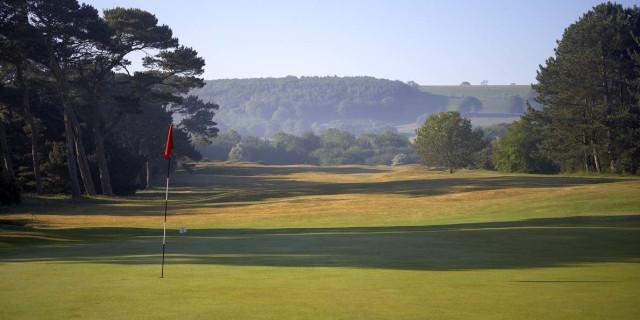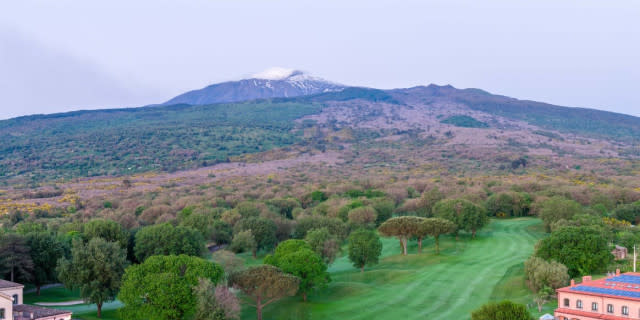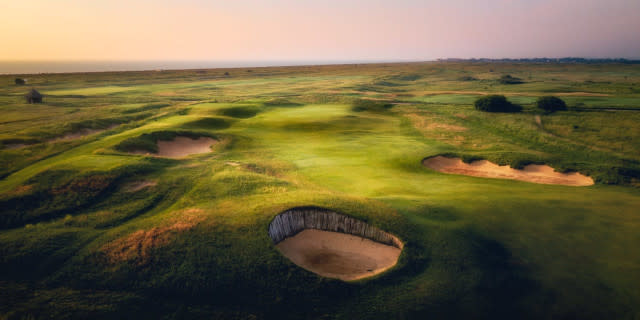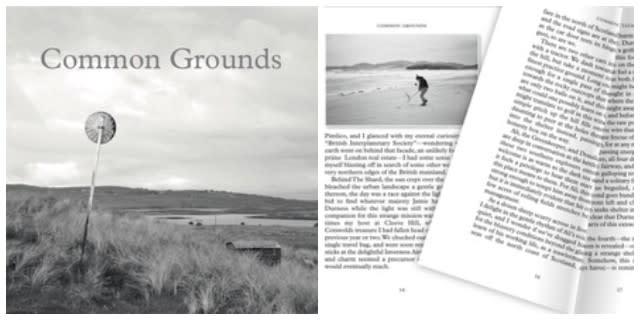
Hole by Hole Guide to Kiawah Island
Designed by Pete and Alice Dye, the Ocean Course at Kiawah Island was unveiled in 1991, presenting a brutally challenging and spectacular coastal layout, that year unforgettably hosting the Ryder Cup.
21 years later, the PGA Championship headed to South Carolina, when Rory McIlroy claimed the Wanamaker Trophy by a record margin. Now, the second men's major of the season returns to a course that will be the longest in the history of the game at this stature, measuring 7,876 yards.
This part of the world is special for golf - and Kiawah Island is a jewel in that crown.
Take a look at each of the ominous holes.
1st, 395 yards, par four:
One of the narrowest fairways on the course, with a sandy waste on the right and thick dune grass down the left. The gently undulating green is tucked into a natural dune area.
2nd, 543 yards, par five:
Ancient oaks line both sides of the fairway and players have to decide how much of the salt marsh to bite off. Depending on the wind there could be the chance to go for the elevated green, set between sand ridges, in two.
3rd, 390 yards, par four:
The shortest par four on the course. The tee shot is played across the marsh, with the best drives finding the plateau on the left. The green is framed by an old oak and slopes off to all sides, with the marsh long and left.
4th, 458 yards, par four:
The toughest par four on the front nine. Playing against the wind, players may opt to bail out to the left of this green and try to save par with a chip.
5th, 188 yards, par three:
The course turns back from east to west for its first par three. An hourglass-shaped green runs away diagonally from the right. A large waste area runs from tee to green.
6th, 480 yards, par four:
Three giant oaks frame the far side of the fairway. There is also a waste area and small pond to the left and the green is protected left and right by more sand.
7th, 579 yards, par five:
Wind conditions will determine the strategy, players having to decide whether to carry a natural dune area. The second shot can be fired at a slightly elevated green open in the front.
8th, 198 yards, par three:
Becomes narrower the further the pin is cut into an elevated green framed by tall live oaks. Any shot missing long or right will find sand.
9th, 494 yards, par four:
A wide fairway sloping down from the right. The putting surface is open in the front, but there are an assortment of grassy swale and deep waste areas both left and right.
10th, 447 yards, par four:
A drive down the left-centre to the crest of the fairway will set up a second shot to a green set down into the dunes. There is a large waste area to the left front of the green and a deeper, steep-faced waste area to the back.
11th, 593 yards, par five:
A proper par five that is out of reach in two for most. Players must avoid several deep waste areas right of the fairway. A good lay-up will leave a pitch to a relatively flat, but exposed and elevated green.
12th, 412 yards, par four:
The widest fairway gives way to one of the narrowest approaches. The green is guarded on the right by a canal, with dunes and thick native grasses framing the left and rear.
13th, 497 yards, par four:
Maybe the most difficult hole on the inward nine. Players must decide just how far down they will try to carry the canal. It continues down the entire right side of the hole.
14th, 238 yards, par three:
The course turns back to the east and plays directly along the beach. A tee shot missing this exposed and elevated green will leave a severe uphill chip. A deep and dangerous waste area is on the left.
15th, 444 yards, par four:
The tee shot must find the fairway to set up a mid-iron to a small green running diagonally away from the player to the right. Waste areas lie left and back right.
16th, 581 yards, par five:
The tee shot is over a pond to reach a terraced fairway that is higher to the right side. A long, shallow waste bunker guards the second shot to the right, with another deeper one guarding the left side.
17th, 223 yards, par three:
The most famous hole on the course. The target over the lake appears narrow with two deep waste areas to the left. Colin Montgomerie won it with a double bogey in the 1991 Ryder Cup and left Mark Calcavecchia in tears.
18th, 501 yards, par four:
Fabulous finishing hole. With the ocean as a backdrop, the fairway falls to the right. Big hitters have a huge advantage if they challenge the right side. Elevated green is open from the right and runs to the back left.
About the author

Derek Clements is a seasoned sports journalist and regular Golfshake contributor, specialising in tour coverage, opinion pieces, and feature writing. With a long career in national newspapers and golf media, he has reported on the game across Europe, the United States and Australia. A passionate golfer, he has played and reviewed numerous renowned courses, with personal favourites including Pebble Beach, Kingsbarns, Aldeburgh, Old Thorns and the K Club. His love of the game informs his thoughtful commentary on both professional golf and the wider golfing community.

Be part of the action with a selection of unique golf tournament experiences, from playing in a pro-am with the stars to watching the action at golf’s most illustrious events. Whether it’s the Masters or The Open, The Ryder Cup or WM Phoenix Open, build your own bespoke package with the experts at Golfbreaks.com.
Tags: us pga PGA Tour PGA european tour










